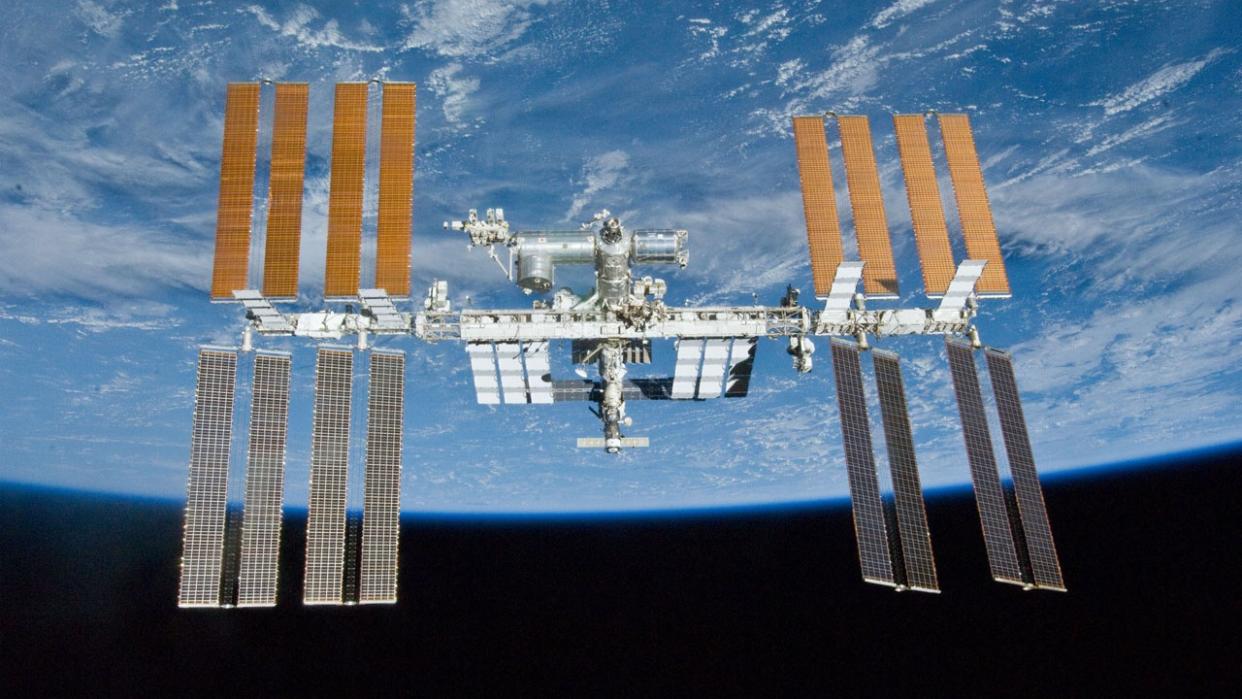ISS fires thrusters to avoid oncoming space junk

Space debris flying towards the International Space Station forced an evasive maneuver Thursday (Aug. 24).
A Russian module on the International Space Station (ISS) turned on around 11 a.m. EDT (1500 GMT or 6 p.m. in Moscow) to move the orbiting complex away from space junk. NASA confirmed the maneuver via e-mail.
"On Thursday, the International Space Station's Zvezda service module engines were fired for 21.5 seconds ... to maneuver the complex away from the predicted track of an orbital debris fragment," NASA officials wrote.
The space station moved its orbit down towards our planet by about 1,640 feet (500 meters), added a Russian-language report from Russian state media outlet TASS, translated by Google; the average altitude of the ISS above Earth is roughly 250 miles or 400 km.
NASA's email, and an earlier agency blog post, said the orbit adjustment will not have any impact on operations in what is a a busy 24 hours for the space station.
Related: How often does the International Space Station have to dodge space debris?
The Progress 85 cargo craft is expected to arrive at the ISS around 11:50 p.m. EDT Thursday (0350 GMT on Friday, Aug. 25).
Hours after that arrival, the SpaceX Crew-7 quartet of astronauts will rocket up to the ISS as well. They are scheduled to launch from NASA's Kennedy Space Center at 3:50 a.m. EDT (0750 GMT) on Friday and you can watch coverage here at Space.com, via NASA Television. Their planned docking will happen Saturday (Aug. 26), which will also run live here at Space.com through NASA.
RELATED STORIES:
— Clearspace-1 space debris cleanup target in orbit just got struck by space debris
— 6 types of objects that could cause space debris apocalypse
Course corrections by the ISS have happened more than 30 times since 1999 and the need is accelerating as more satellites and space junk accumulate in orbit. It is unclear how close the debris passed by the space station this time, or whether it was a natural or artificial piece of debris.
In general, however, such flybys happen from relatively afar.
NASA's guidelines monitor the ISS for any debris coming within a "pizza box"-area shape of space around the station's orbit, which is roughly 2.5 by 30 by 30 miles (4 by 50 by 50 kilometers) with the ISS at the center, according to agency officials. Tracking comes via the U.S. military, which can follow flying pieces as small as 2 inches (5 centimeters) in diameter.
This story was updated at 2 p.m. EDT with updated information from NASA.

